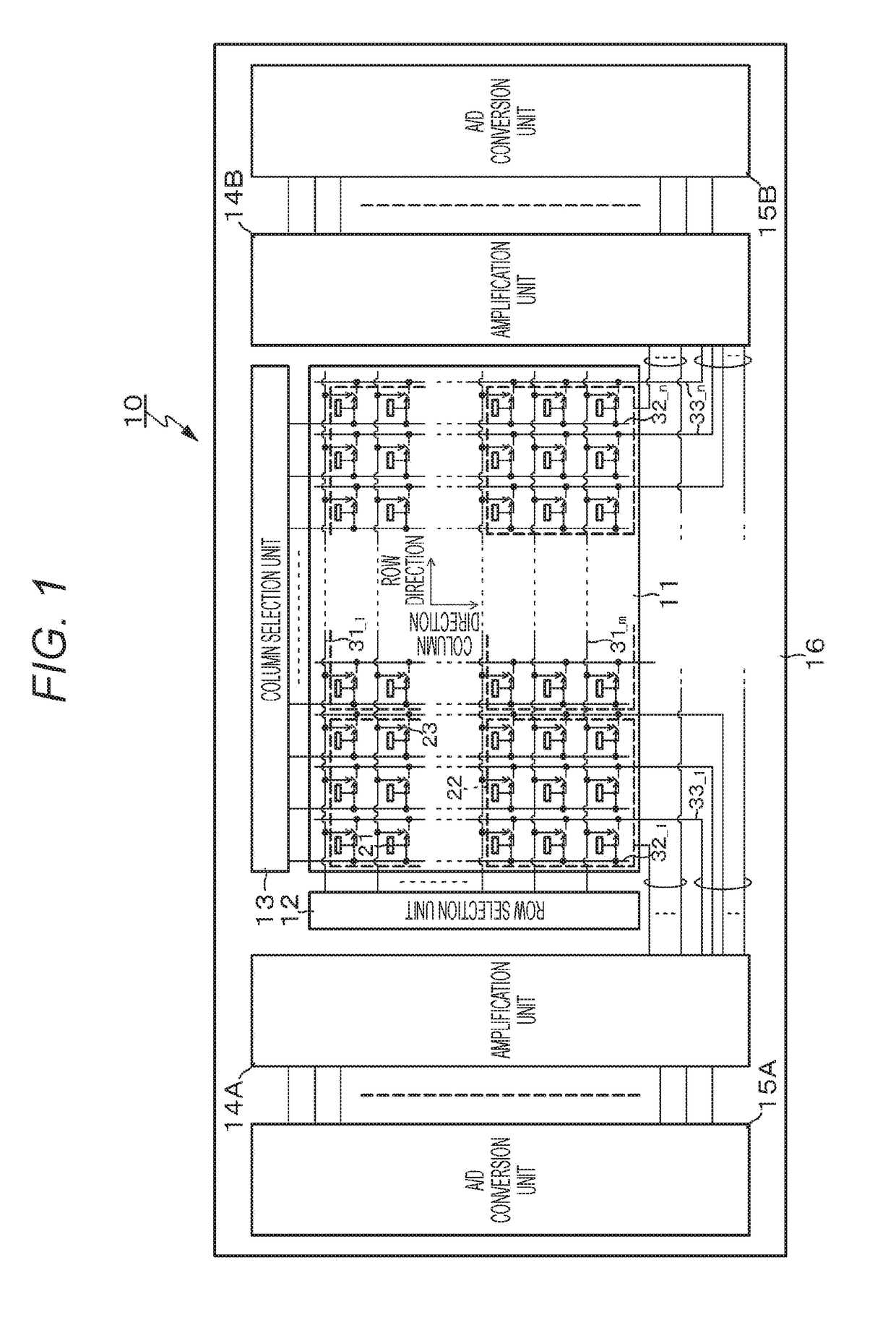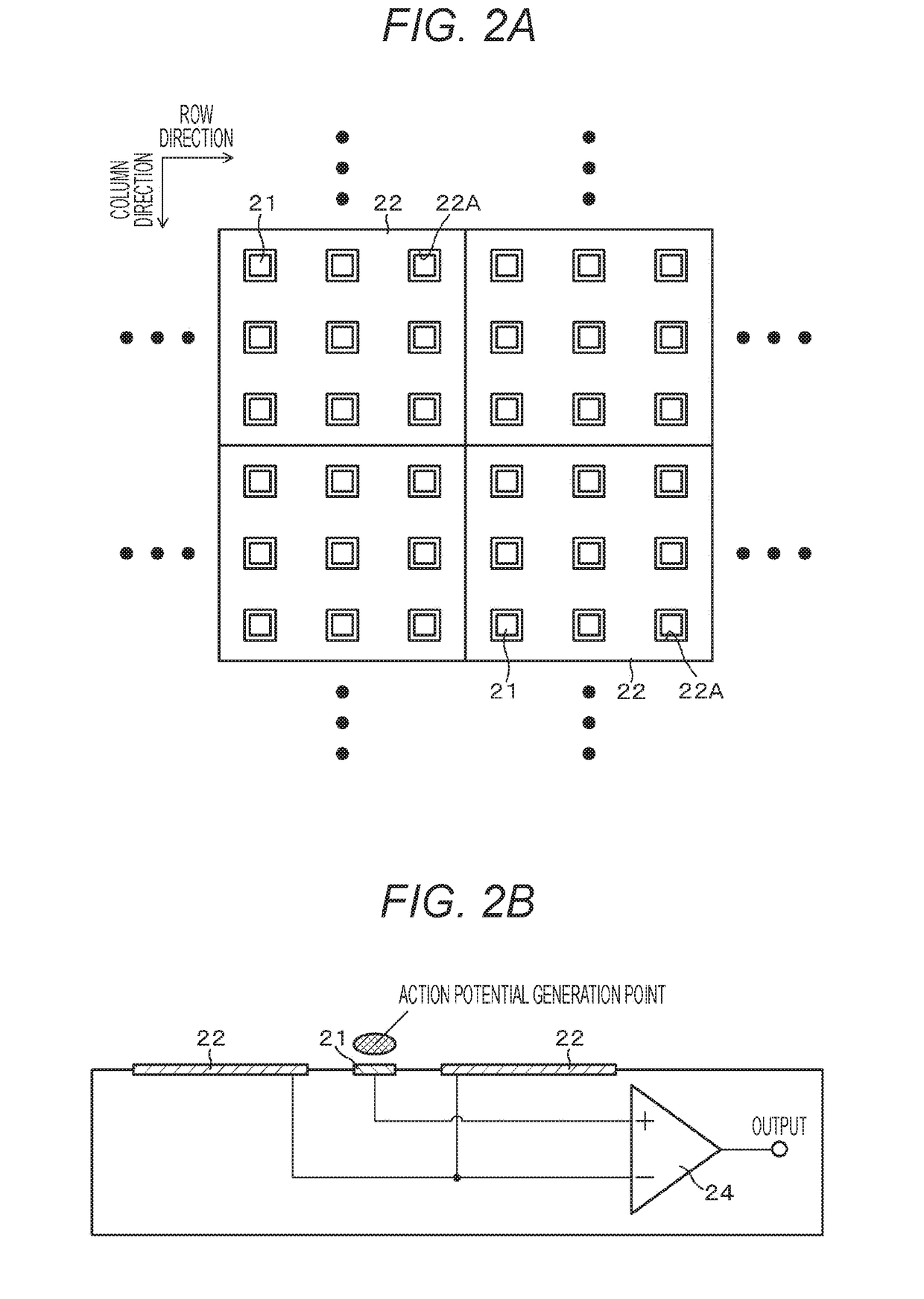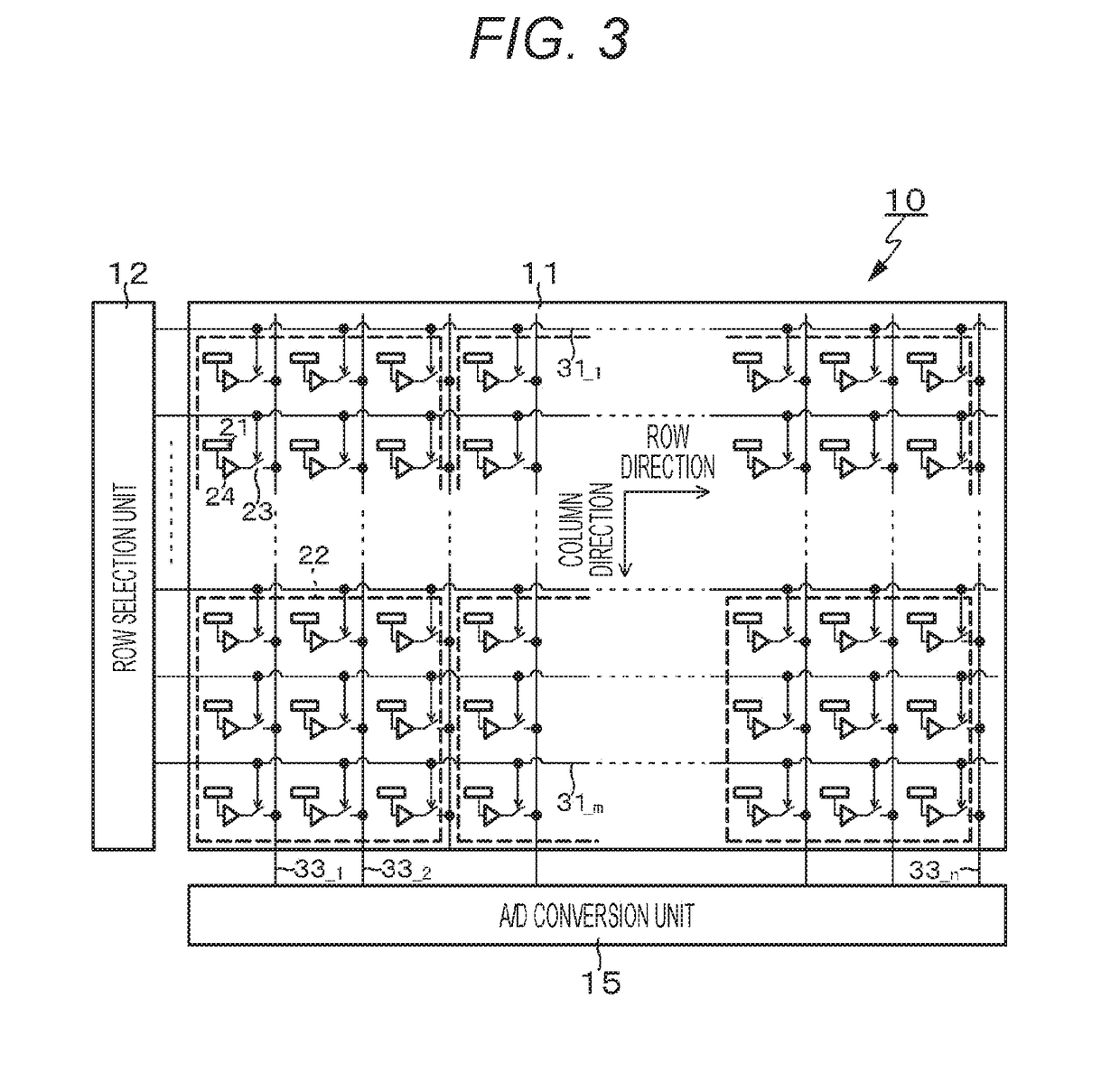Potential measurement device
a technology of potential measurement and measuring device, which is applied in the direction of measuring device, instruments, scientific instruments, etc., can solve the problems of limiting the number of amplifiers, and increasing the number of simultaneous measurement points, so as to reduce the noise of wiring
- Summary
- Abstract
- Description
- Claims
- Application Information
AI Technical Summary
Benefits of technology
Problems solved by technology
Method used
Image
Examples
embodiment 1
[0050]FIG. 1 is a configuration diagram schematically illustrating a configuration of a potential measurement device according to Embodiment 1. A potential measurement device 10 according to this embodiment has a configuration in which an electrode unit 11 which is created using a CMOS integrated circuit technique, a row selection unit 12, a column selection unit 13, amplification units 14A and 14B, and A / D conversion units 15A and 15B are integrated on one semiconductor substrate (semiconductor chip) 16. Herein, the configuration in which the amplification unit 14A and the A / D conversion unit 15A, and the amplification unit 14B and the A / D conversion unit 15B are respectively arranged at both sides with the electrode unit 11 interposed therebetween is employed. Alternatively, a configuration in which the amplification units and the A / D conversion units are arranged at one side of the electrode unit 11 may be employed.
[0051]In the electrode unit 11, m rows and n columns of a plurali...
embodiment 2
[0063]Embodiment 2 is a modified example of Embodiment 1. FIG. 3 schematically illustrates a configuration of a potential measurement device according to Embodiment 2. The potential measurement device 10 according to Embodiment 1 has a configuration in which a plurality of differential amplifiers 24 of the amplification units 14A and 14B is commonly provided for the plurality of read-out electrodes 21 arranged in an array shape. On the other hand, the potential measurement device 10 according to Embodiment 2 has a configuration in which the differential amplifiers 24 are respectively provided for the plurality of read-out electrodes 21 arranged in an array shape.
[0064]Further, in each of the plurality of read-out electrodes 21, the switches 23 are each provided between the output end of the corresponding differential amplifier 24 and the corresponding one of the signal read-out lines 33—1 to 33—n. Each switch 23 is driven to be turned on by the row selection signal applied from the ...
embodiment 3
[0066]Embodiment 3 is a modified example of Embodiment 1. FIG. 4 illustrates a wiring structure between each of the read-out electrodes 21 and the reference electrode 22 and the differential amplifier 24 in a potential measurement device according to Embodiment 3. Embodiment 1 has a configuration in which the electrode size of each reference electrode 22 is set to be larger than the electrode size of each read-out electrode (see FIG. 2A). On the other hand, Embodiment 3 has a configuration in which the electrode size of each reference electrode 22 is set to be smaller than the electrode size of each read-out electrode 21.
[0067]Such an electrode layout example is suitable for cases where the size of a cell is approximately the same as the size of each read-out electrode, or the size of a cell is larger than the size of each read-out electrode. In such cases, electric charge uniformly reaches the entire area of each electrode, so that the amount of electric charge is in proportion to ...
PUM
| Property | Measurement | Unit |
|---|---|---|
| size | aaaaa | aaaaa |
| size | aaaaa | aaaaa |
| action potential | aaaaa | aaaaa |
Abstract
Description
Claims
Application Information
 Login to View More
Login to View More - R&D
- Intellectual Property
- Life Sciences
- Materials
- Tech Scout
- Unparalleled Data Quality
- Higher Quality Content
- 60% Fewer Hallucinations
Browse by: Latest US Patents, China's latest patents, Technical Efficacy Thesaurus, Application Domain, Technology Topic, Popular Technical Reports.
© 2025 PatSnap. All rights reserved.Legal|Privacy policy|Modern Slavery Act Transparency Statement|Sitemap|About US| Contact US: help@patsnap.com



